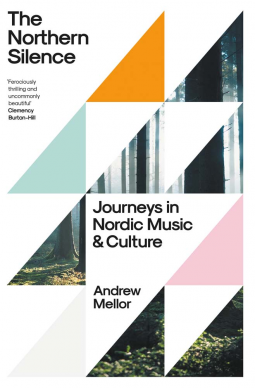
The Northern Silence
Journeys in Nordic Music and Culture
by Andrew Mellor
This title was previously available on NetGalley and is now archived.
Send NetGalley books directly to your Kindle or Kindle app
1
To read on a Kindle or Kindle app, please add kindle@netgalley.com as an approved email address to receive files in your Amazon account. Click here for step-by-step instructions.
2
Also find your Kindle email address within your Amazon account, and enter it here.
Pub Date 26 Jul 2022 | Archive Date 28 Sep 2022
Yale University Press, London | Yale University Press
Talking about this book? Use #TheNorthernSilence #NetGalley. More hashtag tips!
Description
Once considered a musical backwater, the Nordic region is now a musical powerhouse. Conductors from Denmark and Finland dominate the British and American orchestral scene. Interest in the old masters Sibelius and Grieg is soaring and progressive pop artists like Björk continue to fascinate as much as they entertain.
Andrew Mellor journeys to the heart of the Nordic cultural psyche. From Reykjavik to Rovaniemi, he examines the success of Nordic music’s performers, the attitude of its audiences, and the sound of its composers past and present—celebrating along the way some of the most remarkable music ever written. Mellor peers into the dark side of the Scandinavian utopia, from xenophobia and alcoholism to parochialism and the twilight of the social democratic dream. Drawing on a range of genres and firsthand encounters, he reveals that our fascination with Nordic societies and our love for Nordic music might be more intertwined than first thought.
Advance Praise
“Andrew Mellor leads us on an evocative journey through the rich and sonorous pine forest of Nordic music, acting as our faithful and knowledgeable guide and discovering treasures at every turn.”—Víkingur Ólafsson, Pianist
“A sense of deep listening and of silence underpins this brilliant book; an impressive thought-map of interconnected journeys, from the forest to the heart of the Nordic psyche. Mellor presents his insightful ideas with an intensely personal clarity, one that seems infused with the crisp, clean air of the Nordic wilderness.”—Tansy Davies, Composer
“An outstanding account. Andrew Mellor takes us on a sonic journey that is as ferociously thrilling and uncommonly beautiful as the Nordic landscape which he now calls home. Fascinating, nuanced and ear-opening. I am listening anew. ”—Clemency Burton-Hill, Broadcaster, Musician and Author
“I have long admired and respected Andrew Mellor’s work. He always writes with a deep knowledge and love of his subject matter and his particular expertise in the field of Nordic music is unparalleled.”—Leif Ove Andsnes, Pianist
“I was entranced by this pitch perfect journey through Scandinavia, evoking the people, the places and most uniquely, the music; inspired by the silence and the snow, the long, dark winters and frantic bursts of summer that make life and culture feel so visceral there.”—Mariella Frostrup, Broadcaster and Author
Available Editions
| EDITION | Other Format |
| ISBN | 9780300254402 |
| PRICE | US$30.00 (USD) |
| PAGES | 320 |



